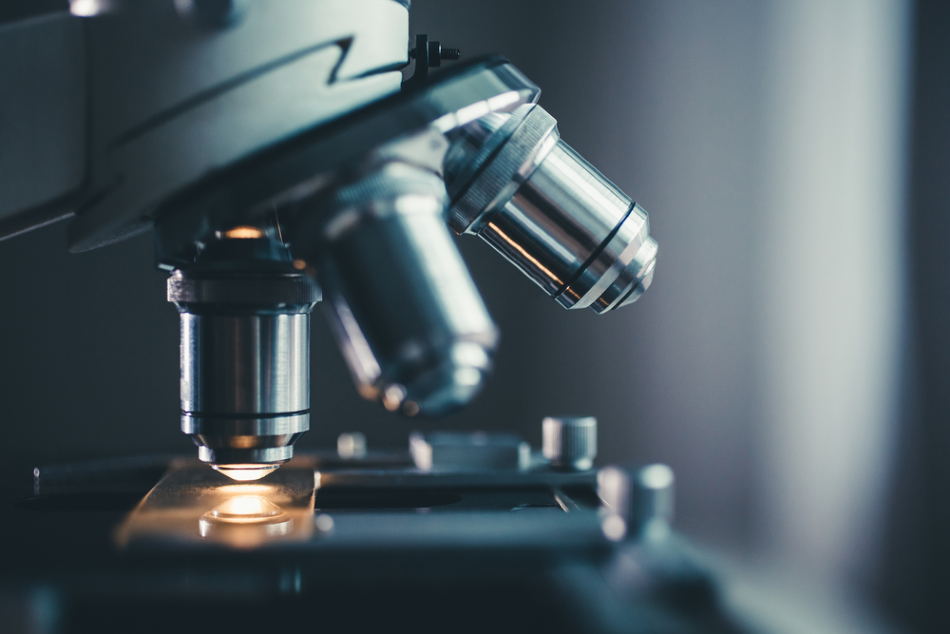
Image Credit: Konstantin Kolosov/Shutterstock.com
A team of researchers from the Chinese Academy of Sciences has enhanced current nanoscopy techniques by creating an advanced imaging approach. A new study has demonstrated that it can achieve super-resolution microscopy at speeds that have not been seen before.
Their work, which was published in Optica, a journal by The Optical Society (OSA), describes how the new technique overcomes the limitations of previous super-resolution techniques to provide a tool that can capture high-resolution imagery of living cells.
Improving on the Limitations of Past Nanoscopy Methods
There are already several established super-resolution techniques, and this family of tools is often referred to as nanoscopy methods. While these methods are incredibly useful as they overcome the diffraction limit of light to provide ultra-high-resolution images at the nano-scale, they’re not without their limitations.
The images they create require hundreds of thousands of imaging frames, these processes are just too slow to be used to visualize the rapidly changing dynamics occurring within living cells.
The researchers at the Chinese Academy of Sciences, therefore, worked on a method to tackle this limitation. They developed a system that could image the interactions happening within living cells at a molecular level.
A Combination of Techniques
To overcome the limitations of previous nanoscopy methods, the Chinese research team used ghost imaging, an unconventional imaging approach that the scientists used to enhance the speed of the nanoscopy imaging. Combining the two approaches allows for the production of images with the same resolution, but using fewer frames, and therefore enhancing the speed.
To achieve this, the team described how they worked from the stochastic optical reconstruction microscopy (STORM) approach, a super-resolution technique that won the Nobel Prize in 2014. The method uses fluorescent labels that alternate between being light-emitting and dark, allowing users to produce thousands of snapshots that capture a subset of labels each time. The process captures the location of each molecule at any given time, reconstructing it within a fluorescence image.
To speed this process up, the researchers incorporated ghost imaging, which creates images based on correlations between patterns of light that interact with the target object, and reference patterns that don’t. Researchers also combined the approach of compressive imaging which can reconstruct images with far fewer frames.
Scientists used a random phase modulator to code the fluorescence in a way that saw each pixel of a very fast CMOS camera collecting light intensity from the whole object in just a single frame. This light intensity was then correlated with a reference light pattern to create the image via ghost imaging and compressive imaging. The resultant image was achieved more efficiently, allowing for fewer frames to be used to create a high-resolution image.
Faster Speeds, Better Resolution
The team demonstrated that the method could potentially be used to probe the dynamics within a cell that are happening at millisecond time-scales, with the spatial resolutions of tens of nanometers. This allows for the imaging of biological processes to occur.
The method improved on the previously established STORM technique which requires numerous frames as well as a low density of fluorescent labels to reconstruct images. In contrast, the new approach produced high-resolution images using far fewer frames and a high density of fluorophores. The new method also needs no complex illumination, meaning that the potential risk of harming dynamic biological processes and living cells is reduced.
Future Directions
The research team at the Chinese Academy of Sciences intend their newly developed method to be combined with different kinds of fluorescent samples, developing it for samples that exhibit weaker fluorescence than was used in the current research. The team also aims to improve on the speed of the technique further, hopefully achieving video-rate imaging with a large field of view.
The process should benefit many areas of science, as it allows researchers to view cells in a way that was never before possible. We should expect numerous studies to emerge in the future, having benefitted from the use of this technique.
References and Further Reading
- Huang, B., Wang, W., Bates, M. and Zhuang, X. (2008). Three-Dimensional Super-Resolution Imaging by Stochastic Optical Reconstruction Microscopy. Science, 319(5864), pp.810-813. https://science.sciencemag.org/content/319/5864/810
- Gong, W. and Han, S. (2012). Multiple-input ghost imaging via sparsity constraints. Journal of the Optical Society of America A, 29(8), p.1571. https://www.osapublishing.org/josaa/abstract.cfm?uri=josaa-29-8-1571
- Li, W., Tong, Z., Xiao, K., Liu, Z., Gao, Q., Sun, J., Liu, S., Han, S. and Wang, Z. (2019). Single-frame wide-field nanoscopy based on ghost imaging via sparsity constraints. Optica, 6(12), p.1515. https://www.osapublishing.org/optica/abstract.cfm?uri=optica-6-12-1515
Disclaimer: The views expressed here are those of the author expressed in their private capacity and do not necessarily represent the views of AZoM.com Limited T/A AZoNetwork the owner and operator of this website. This disclaimer forms part of the Terms and conditions of use of this website.